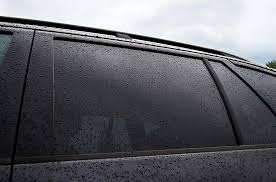 While there are DIY window tinting kits available for consumers, many still choose to get the car tinting job done by a tint professional. Tinting specialists are more up to date with the existing tint regulation and darkest legal tint. The tinting law may depend on what the local government set, so if you want to tint your car windows yourself, better consider it first. Factory tinted glass. This is a standard window tinting for almost any new car. Factory tinted glass has pigments and dyes that are added to the glass during the manufacturing process. It darkens the glass and reduces the amount of visible light that passes through the car’s window. These type of tint is also known as window privacy film and considered an extra-cost option. To stick to the law, these privacy film has a Visible Light Transmission (VLT) of between 15%to 26%. Aftermarket window tint. This type of glass tint is a polyester film comprised of multiple layers. It includes an adhesive coating, layers containing metal particles, dyes and pigments, and a final layer that makes it scratch-resistant. After-market window tinting has benefits that factory tint does not provide. Tint Installation One common problem of DIY tinting is that if they are not extra careful. It is more likely that they will create bubbles in the surface or just ruin the film altogether which they may have to call an installer in the end. In Australia, most territories allow 35%, 20% or 15% on the front windows and rear windows while they do not allow tint to be applied to the windscreen. They do allow 10% visor strip of any colour on the windscreen though. You have to know the tinting requirements and proper installation of window privacy film Chelmer. Otherwise, it is better to just have a professional do it for you.it. Comments are closed.
|